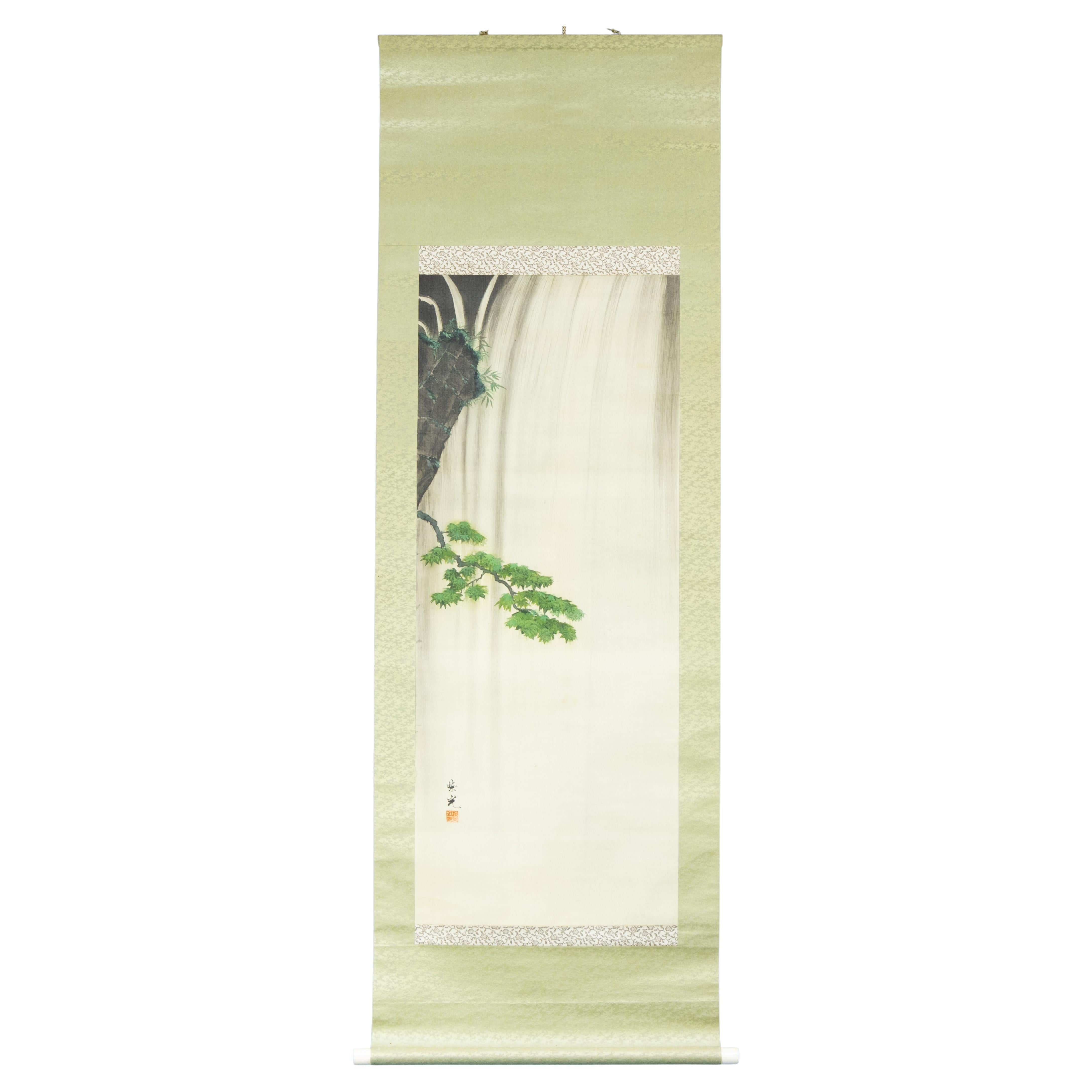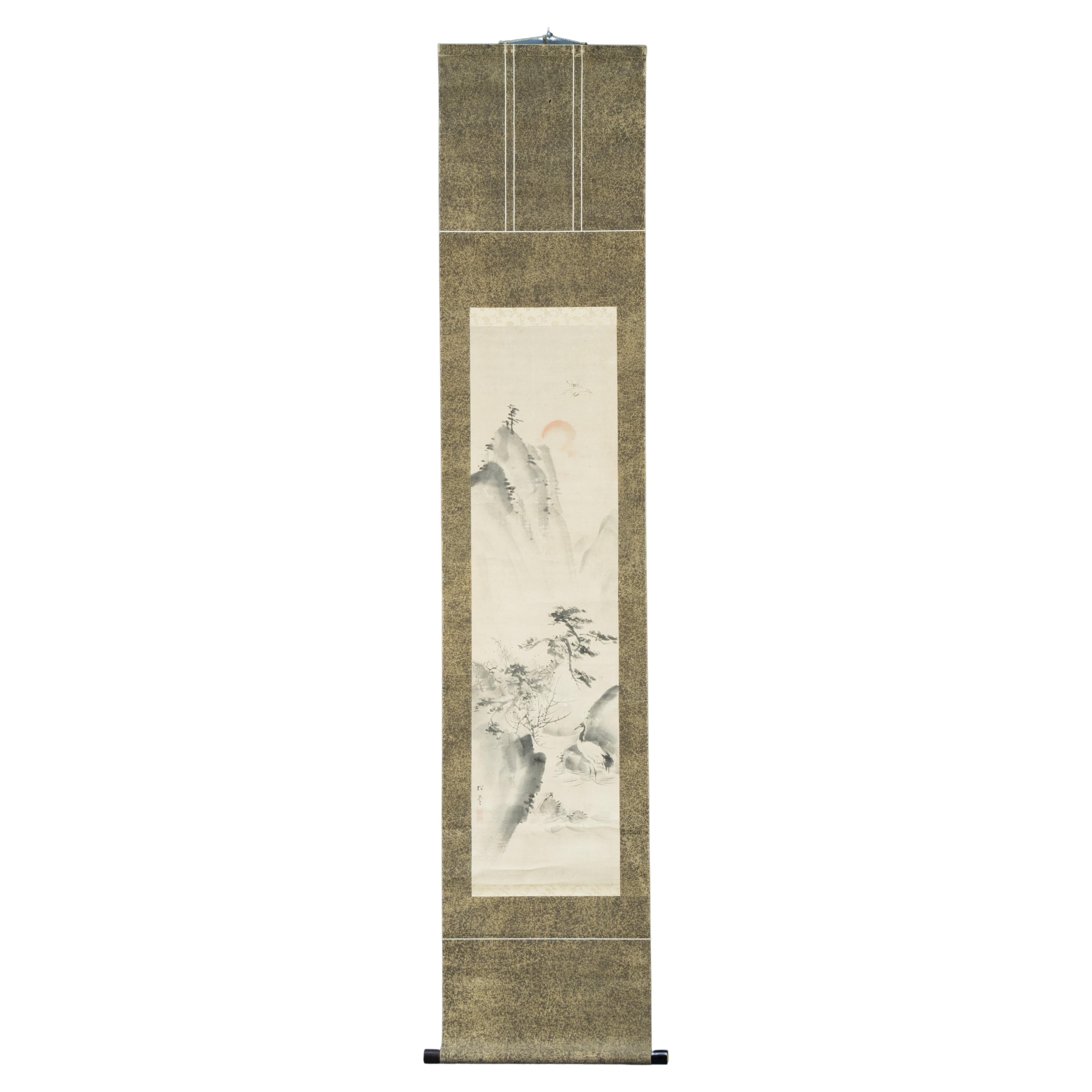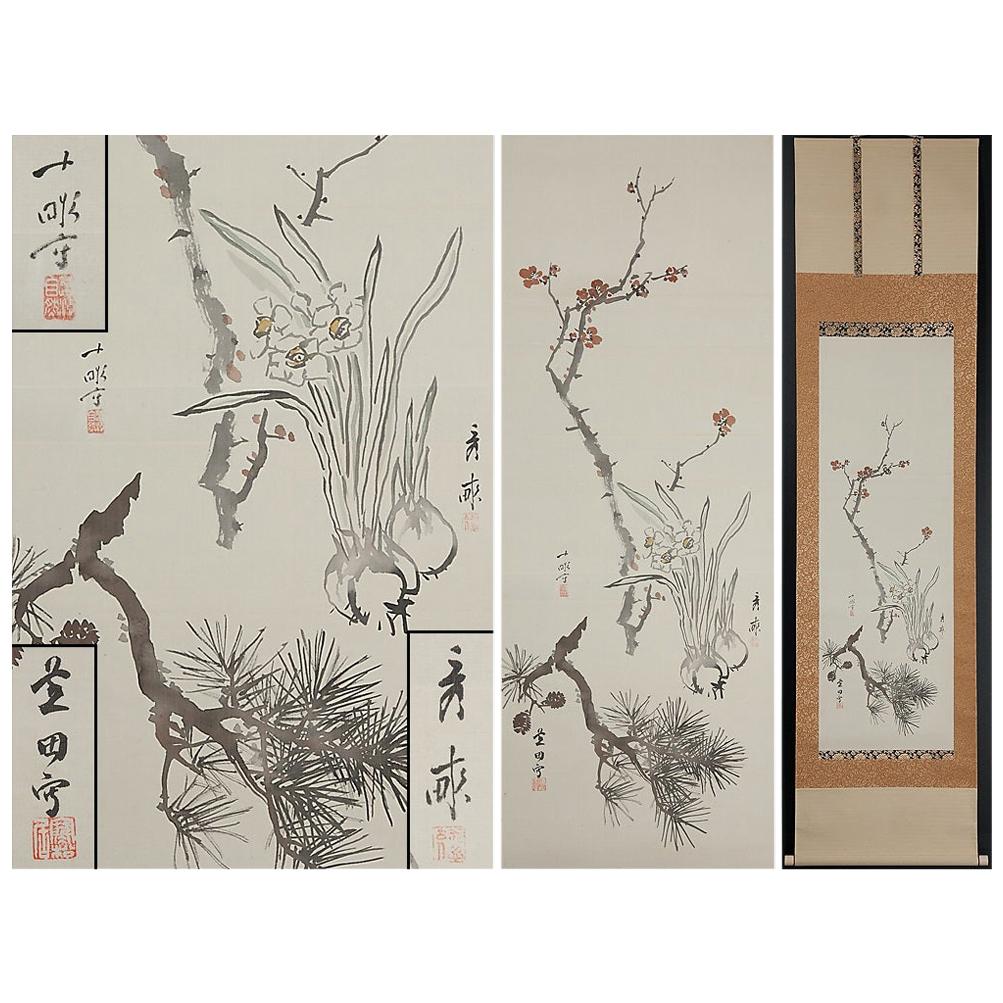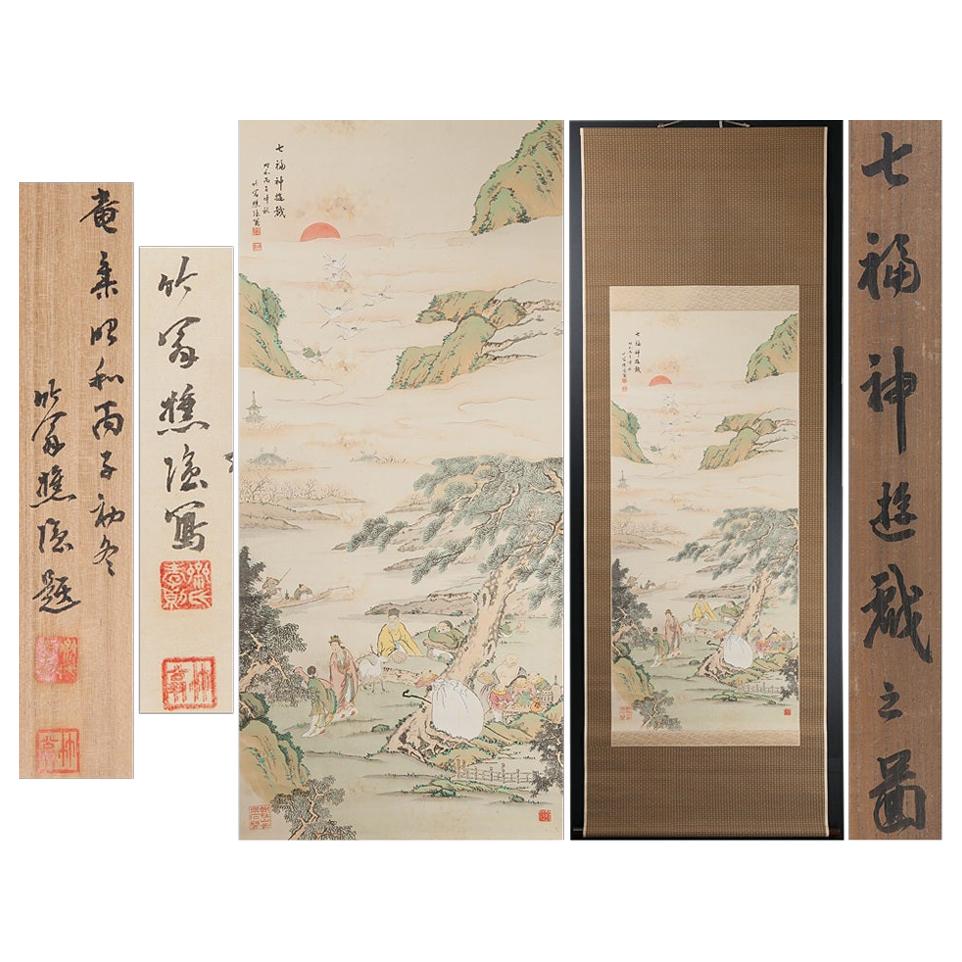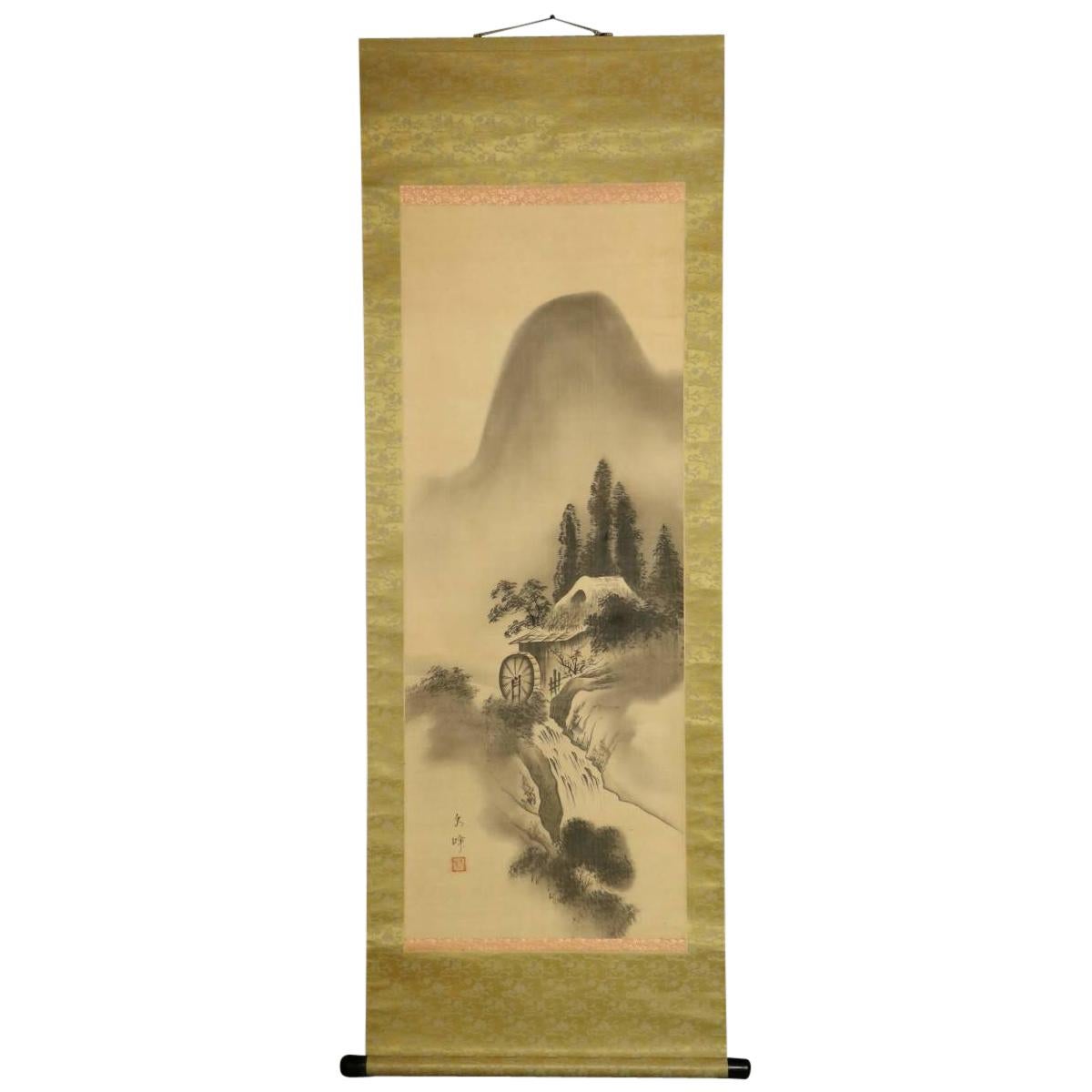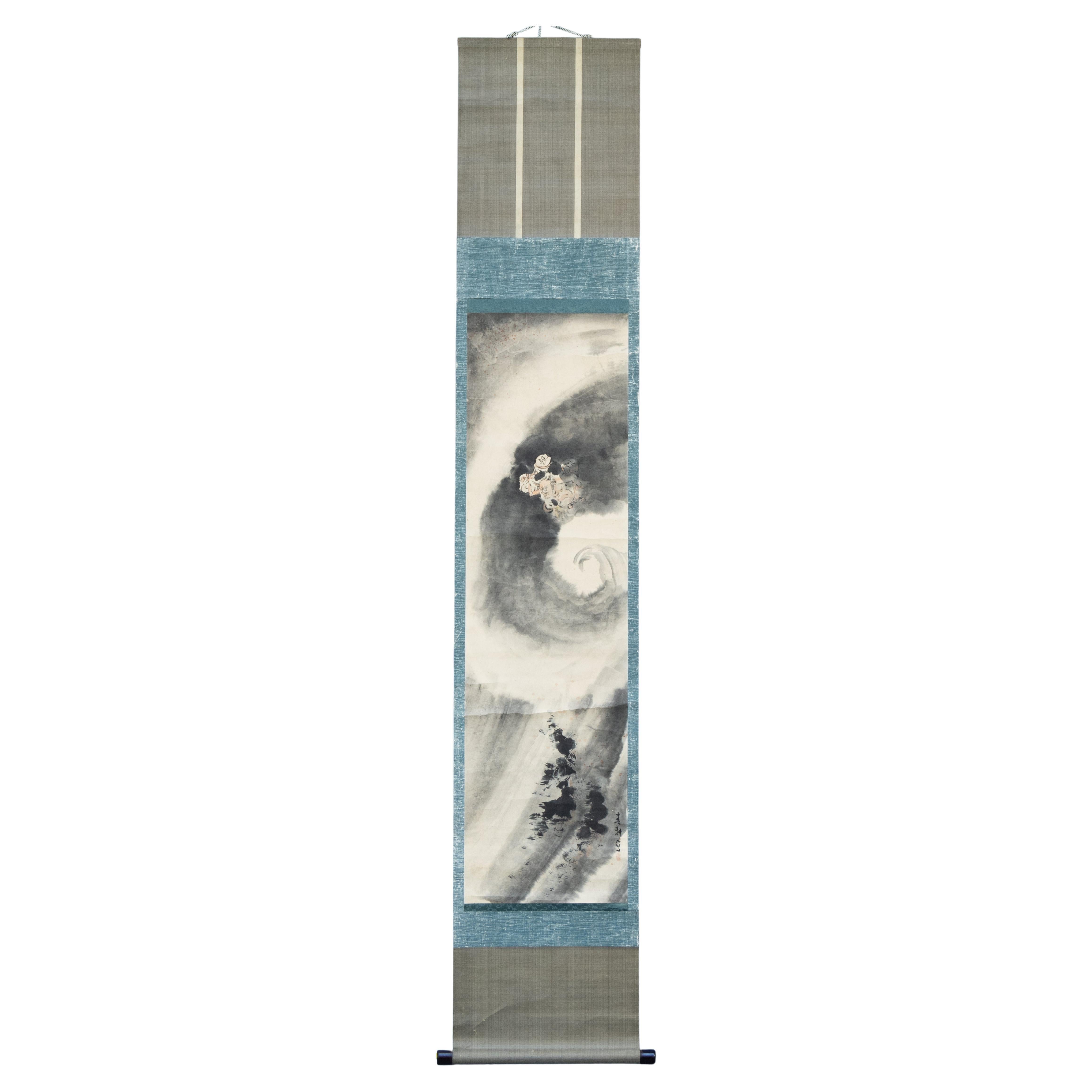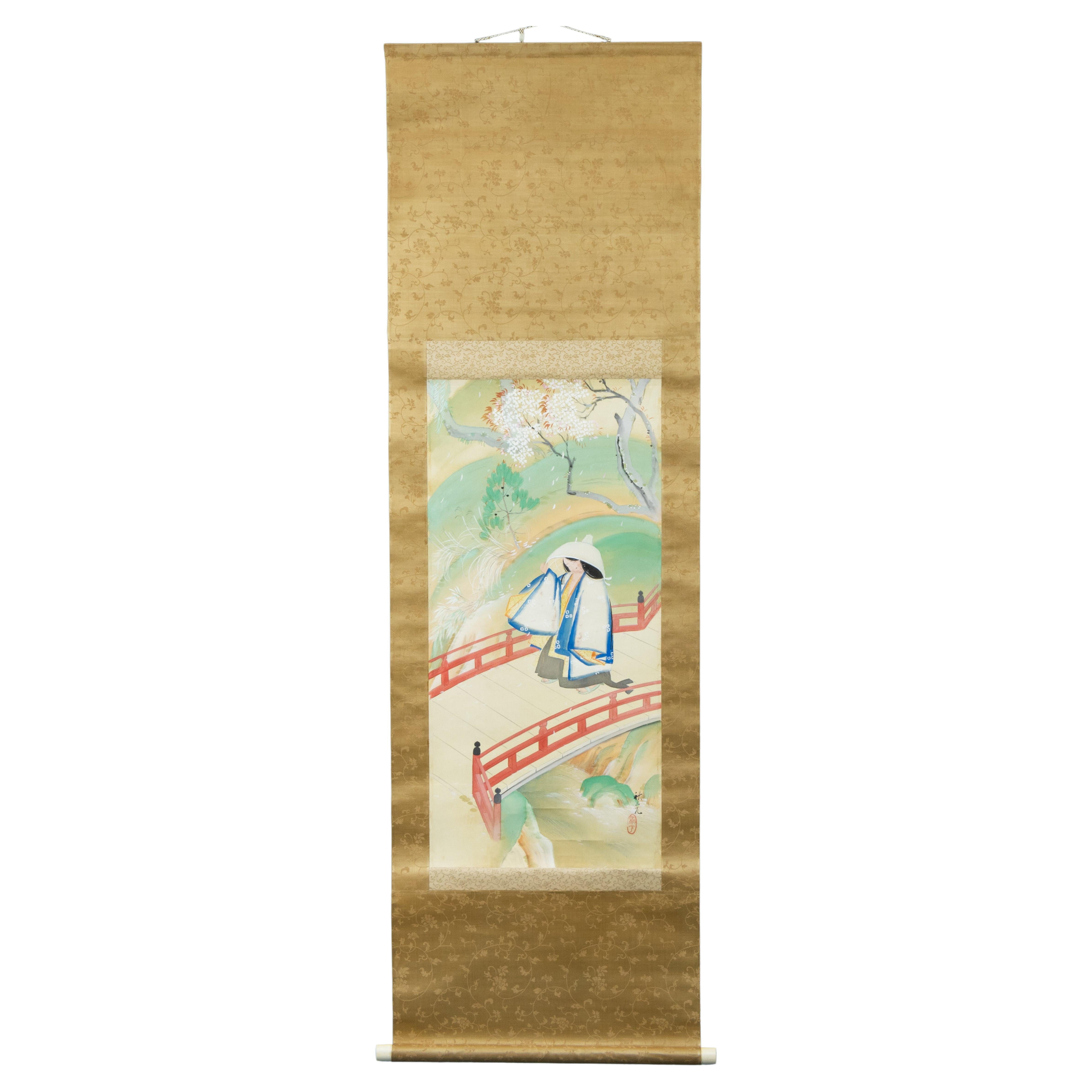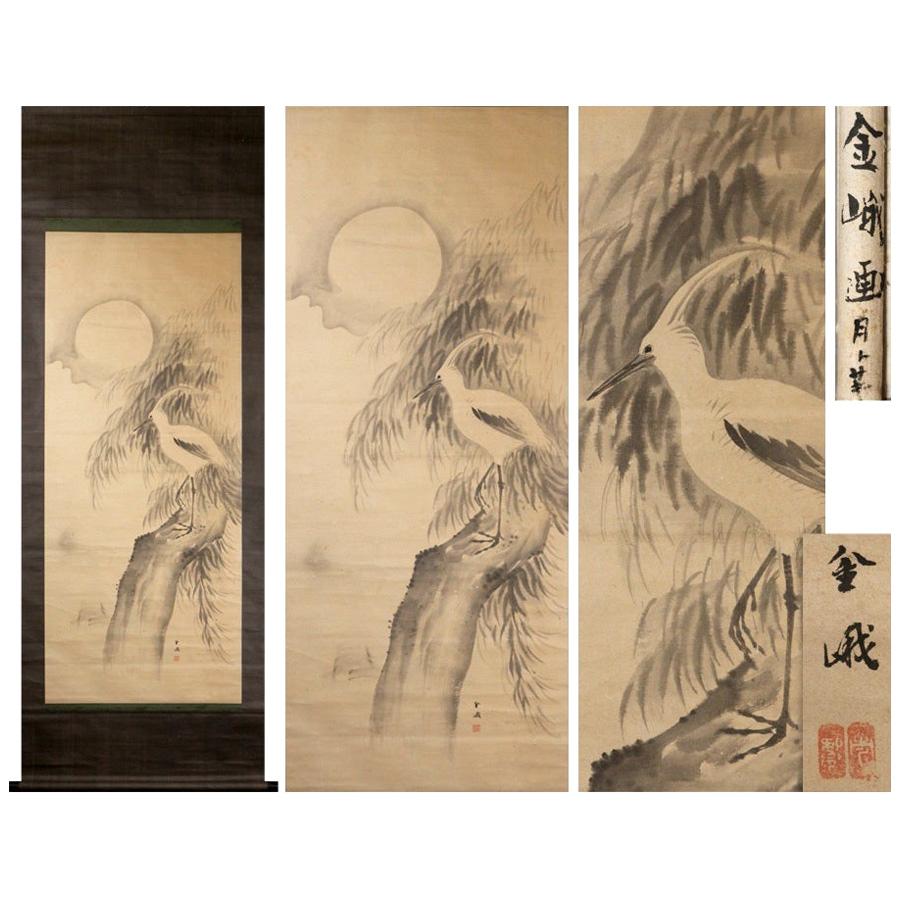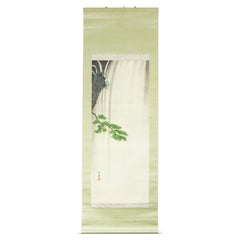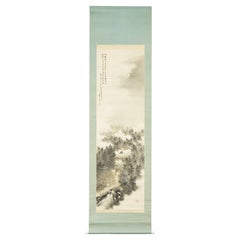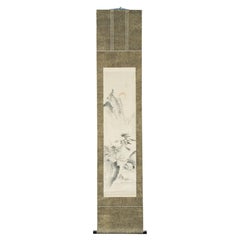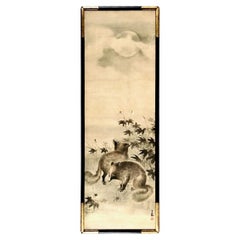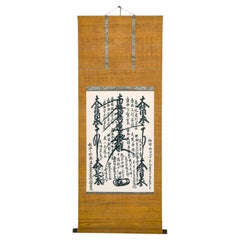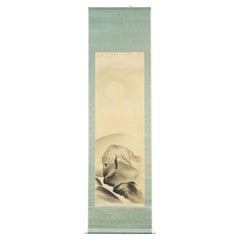
Japanese Meiji Period Painting Scroll Racoon Tanuki Nihonga Japan Artist Signed
View Similar Items
Want more images or videos?
Request additional images or videos from the seller
1 of 6
Japanese Meiji Period Painting Scroll Racoon Tanuki Nihonga Japan Artist Signed
About the Item
- Dimensions:Height: 74.41 in (189 cm)Width: 21.19 in (53.8 cm)Depth: 0.04 in (1 mm)
- Style:Meiji (Of the Period)
- Materials and Techniques:
- Place of Origin:
- Period:
- Date of Manufacture:19th Century
- Condition:Wear consistent with age and use.
- Seller Location:Amsterdam, NL
- Reference Number:Seller: 1330917030031stDibs: LU4863232165362
About the Seller
5.0
Gold Seller
These expertly vetted sellers are highly rated and consistently exceed customer expectations.
Established in 2015
1stDibs seller since 2019
158 sales on 1stDibs
Typical response time: 12 hours
More From This SellerView All
- Japanese Meiji Period Painting Scroll Landscape Nihonga Japan Artist SignedLocated in Amsterdam, Noord HollandJapanse school Esdoorntak voor waterval Rolschildering / scroll op zijde, benen rollers. B 106 x 42.8 / 167 x 56.1 cm 106 x 42.8 / 167 x 56.1 cmCategory
Antique Mid-19th Century Japanese Meiji Paintings and Screens
MaterialsSilk
$1,286 Sale Price25% Off - Japanese Meiji Period Painting Scroll Night Landscape Nihonga Japan Artist SignLocated in Amsterdam, Noord HollandJapanse school Boerderij in bamboebos in maanlicht Rolschildering / scroll op zijde, benen rollers. B 140.4 x 42 / 198.5 x 54.5 cm 140.4 x 42 / 198.5 x 54.5 cm.Category
Antique Mid-19th Century Japanese Meiji Paintings and Screens
MaterialsSilk
$1,372 Sale Price20% Off - Japanese Meiji Period Painting Scroll Crane Landscape Nihonga Japan Artist SignLocated in Amsterdam, Noord HollandJapanse school Kraanvogels en schildpadden in stromend water met Horaisan op de achtergrond Rolschildering / scroll op papier, houten rollers. B 100.5 x 26.7 / 183.5 x 37.7 cm 100....Category
Antique Mid-19th Century Japanese Meiji Paintings and Screens
MaterialsSilk
$1,372 Sale Price20% Off - Immortals Nihonga Scene Meiji/Taisho Period Scroll Japan Artist Meiji PeriodLocated in Amsterdam, Noord HollandAxis: Vertical 186 cm, Horizontal 47 cm Inside: Vertical 107 cm, Horizontal 35 cm *Some errors will occur in the dimensions. Please understand. Status I don't know the details of t...Category
Antique 19th Century Japanese Meiji Paintings and Screens
MaterialsSilk
$752 Sale Price20% Off - Immortals Nihonga Scene Meiji/Taisho Period Scroll Japan Artist Meiji PeriodLocated in Amsterdam, Noord HollandSome errors will occur in the dimensions. Please understand. Status I don't know the details of the author, but this item is hand-drawn rather than printed. Measures: Axis vertical ...Category
20th Century Japanese Meiji Paintings and Screens
MaterialsSilk
$752 Sale Price20% Off - Immortals Nihonga Scene Meiji/Taisho Period Scroll Japan Artist Meiji PeriodLocated in Amsterdam, Noord HollandAxis: Vertical 194 cm, Horizontal 49.5 cm Inside: Vertical 126 cm, Horizontal 37 cm *Some errors will occur in the dimensions. Please understand. Status I don't know the details of...Category
20th Century Japanese Meiji Paintings and Screens
MaterialsSilk
$752 Sale Price20% Off
You May Also LikeView All
- Japan Scroll Painting, Meiji PeriodLocated in Pasadena, CAThis is a wonderful example of a Meiji Period screen painting of Japanese Tanuki or racoon dogs in a landscape. The Tanuki is considered to be a mythical creature Japanese culture. T...Category
Antique Late 19th Century Japanese Meiji Paintings and Screens
MaterialsFabric, Paint
$1,850 Sale Price24% Off - Japanese Meiji Riverside Scroll Painting, c. 1900Located in Chicago, ILAlthough western painting was initially embraced during Japan’s Meiji period (1868-1912), artists brought on a revival of traditional painting styles as they sought to create a modern Japanese style with roots in the past. This exquisite hanging scroll demonstrates the preference for soft layering of gray tones with judicious use of color. The landscape is rendered in soft ink washes that subtly distinguish between water, mountain, and sky. The scroll painting...Category
Early 20th Century Japanese Meiji Paintings and Screens
MaterialsPaper
- Japanese Gohonzon Buddhist Calligraphy Mandala Scroll Meiji PeriodLocated in Atlanta, GAA Japanese sumi ink calligraphy Buddhist mandala mounted as a paper hanging scroll known as Kakejiku or sometimes Moji mandala. Termed as gohonzon in Japanese, it is a venerated object within Nichiren Buddhism (Hokkeshu; lotus sect). The originally concept was developed by the 13th century Buddhist priest Nichiren to guide the energy of the devotional chanting to...Category
Antique Early 1900s Japanese Meiji Paintings and Screens
MaterialsPaper
- Japanese Gohonzon Buddhist Calligraphy Mandala Scroll Meiji PeriodLocated in Atlanta, GAA Japanese sumi ink calligraphy Buddhist mandala mounted as a paper hanging scroll known as Kakejiku or sometimes Moji mandala. Termed as gohonzon in Japanese, it is a venerated object within Nichiren Buddhism (Hokkeshu; lotus sect). The originally concept was developed by the 13th century Buddhist priest Nichiren to guide the energy of the devotional chanting to...Category
Antique 1890s Japanese Meiji Paintings and Screens
MaterialsPaper
- Antique Japanese Medicine "Kanban" 'Shop Sign', Late Meiji PeriodLocated in Point Richmond, CAAntique Japanese Medicine "Kanban" (Shop Sign) with mirror, Meiji Period. The Medicine being advertised is a soothing cream used to relieve itchin...Category
Early 20th Century Japanese Meiji Paintings and Screens
MaterialsWood, Lacquer
- Antique hanging scroll of Japanese cat/Late Edo-Meiji period/Cat paintingLocated in Sammu-shi, ChibaThis is a picture of a cat drawn by a person named "Toshizumi Nitta" from the end of the Edo period to the beginning of the Meiji period. She is a very simple and cute cat. He is a vassal of the Tokugawa Shogunate, born in Ota City, Gunma Prefecture (southern part of Gunma Prefecture). He was related to the Tokugawa family and lived in a large mansion in the Ota clan in Gunma prefecture. However, the Nitta family's territory was very small, and they were by no means a wealthy vassal. He seems to have lived quite poorly. So he painted cats and sold them to people. The Nitta family continued to draw pictures of this cat for four generations. "Nitta toshizumi" is equivalent to the fourth generation. During the Edo period, sericulture was thriving in the Kanto region. Cats were said to be the gods of silkworms, as they drive away mice, the natural enemies of silkworms. It was the Nitta family who drew such a cat on paper, pasted it in the silkworm chamber, and sold it as a mouse repellent. There were also other monks who painted pictures of cats, but the Nitta family in particular was related to the Tokugawa family, so people believed that paintings of cats had special powers. , a lot of paintings...Category
Antique Late 19th Century Japanese Edo Paintings
MaterialsPaper
Recently Viewed
View AllMore Ways To Browse
Racoon Painting
Japanese 19th Century Meiji Period Silk Painting
Japanese Racoon
Chinese Screen Gold Gods
Huang Gang
Tiffany Vase Uk
Zhao Shao Ang
Early Ming Fresco Painting
Chinese Mother Of Pearl Inlay Lacquer Screen
Geisha Soapstone Panels
Frances Blakemore
Masaoka Shiki
Mother Of Pearl Inlay Chinese Room Divider
Shiryu Morita
Southeast Asian Floor Screen
Ming Fresco
Tsuji Kako
Asian Lacquer 6 Panel Folding Room Screen
